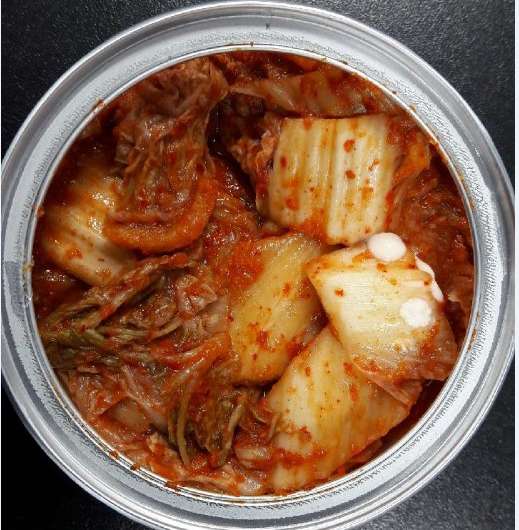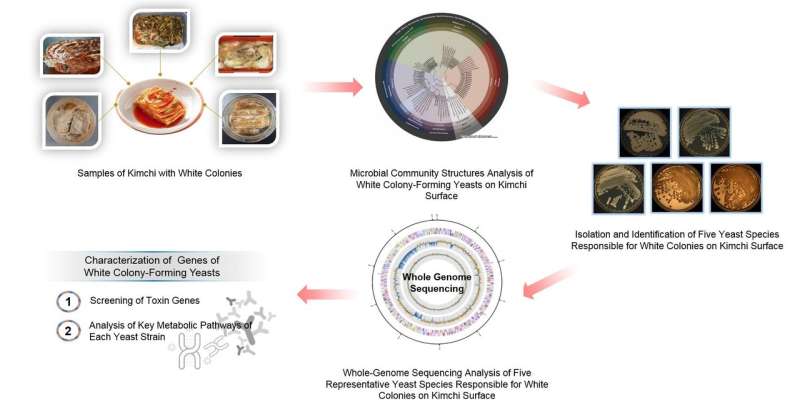Producers of white colonies on kimchi surface, mistaken as molds, have been identified

The World Institute of Kimch (WiKim) has reported that the white colonies on the surface of kimchi are not formed by molds but by yeasts. The researchers also acquired genomic data regarding the hygienic safety of the yeast strains.
This report is based on a study conducted by Dr. Tae-Woon Kim and Dr. Seong Woon Roh's team at Microbiology and Functionality Research Group of WiKim. The study involves a next-generation sequencing (NGS) approach to the collected white colonies from the surface of kimchi samples such as cabbage kimchi, mustard leaf kimchi, young radish kimchi, and watery kimchi. The findings were published in the latest online edition (Oct. 2018) of the Journal of Microbiology, an international academic journal.
In general, yeasts produce alcoholic and aromatic compounds that generate the flavor of fermented foods; hence, they are frequently used in making bread or rice wine. Kimchi is primarily fermented by lactic acid bacteria rather than yeasts. However, during the later phase of fermentation, when the activity of lactic acid bacteria is decreased, a white colony on kimchi surface is formed by yeasts. The white colony is often observed on the surface of moist fermented food products including soy sauce, soy bean paste, rice wine and kimchi.

The research group performed microbial community structure analysis to identify five representative yeast strains responsible for white colony on kimchi surface: Hanseniaspora uvarum, Pichia kluyveri, Yarrowia lipolytica, Kazachstania servazzii, and Candida sake. Furthermore, whole-genome sequencing of the five yeast strains confirmed that they do not have known toxin-related genes.
This study is the first to analyze the diversity of microbial community structures and perform whole-genome sequencing of white colony-forming yeasts on kimchi surface using NGS technology. In the future, WiKim intends to disseminate this genetic information regarding white colony-forming yeasts on kimchi surfaces in the Genome Database of Kimchi-associated Microbes (GDKM) and to perform additional studies such as toxicity tests based on animal experiments to verify the safety of the identified yeasts and to develop methods to prevent their formation.
In order to prevent white colony formation, the surface of kimchi should be covered with a sanitized cover or be immersed in the kimchi liquid so that the surface is not exposed to the air. Furthermore, it is advised to maintain kimchi at a storage temperature below 4°C. White colonies on kimchi surfaces should be skimmed off and the kimchi should be washed and heated before eating.
General Director Dr. Jaeho Ha at WiKim said, "This study is significant in that it has scientifically identified white colony-forming yeasts for which the people used to have vague anxiety and it is a step forward toward the alleviation of the anxiety for hygienic safety of kimchi."
More information: Joon Yong Kim et al, Community structures and genomic features of undesirable white colony-forming yeasts on fermented vegetables, Journal of Microbiology (2018). DOI: 10.1007/s12275-019-8487-y
Provided by National Research Council of Science & Technology




















